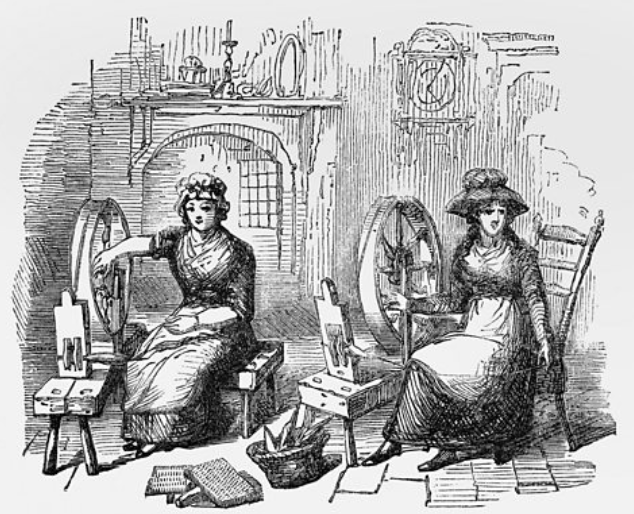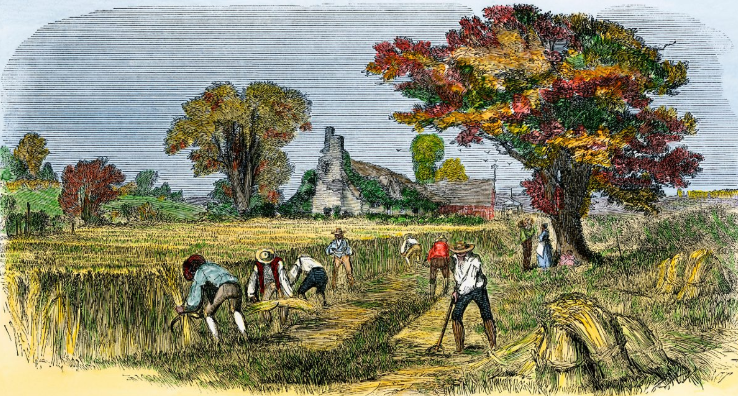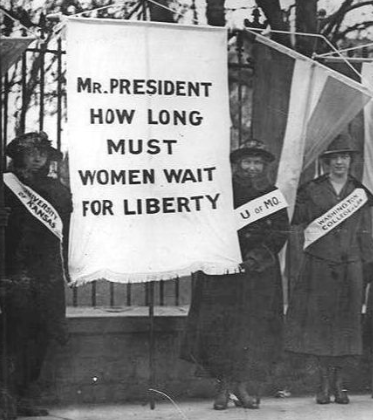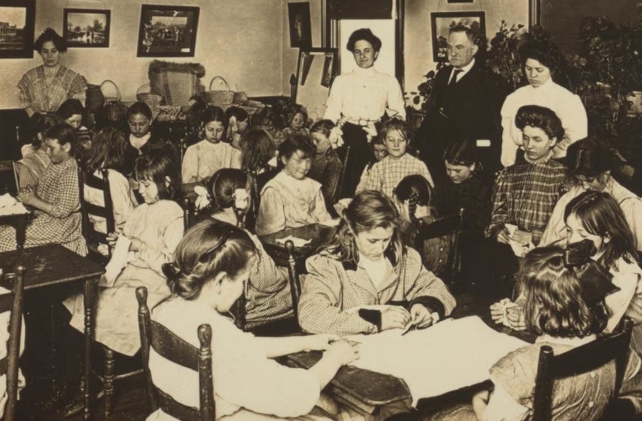
Before the Industrial Revolution: Women's Traditional Roles
In the late 18th century and before the Industrial Revolution in the 19th century, women were primarily responsible for taking care of their families and the local rural economy. Although women were largely excluded from formal employment and political life, they still made a huge contribution to society through their efforts in housework and informal economic work to maintain the normal functioning of their families.[1]
In agricultural societies, families had to be almost entirely self-sufficient in terms of daily necessities. Women were responsible for preparing food, weaving cloth, sewing clothes, making butter, and storing food for the winter. For example, in British villages, many women used spinning wheels to spin wool and weave linen for household use and trade. In areas where agricultural income alone was not enough to support a family, women's weaving played an important role.
Before industrialization, women primarily worked under the “putting-out system,” also known as the “family system.” Under this system, businessmen provided women with raw materials such as wool or cotton, which the women then processed at home. They spun the wool into yarn and used looms to make fabric, which they finally returned to the businessmen to be sold as finished products. This system was widespread in England, France, and parts of Germany during the 17th and 18th centuries, particularly in textile-producing regions like Lancashire or Normandy. It provided women with an opportunity to earn income without leaving their homes while also allowing them to care for their children and manage household duties.[2]
In addition to taking care of household duties and textile work, rural women also worked in agriculture. During the planting and harvesting seasons, women worked with men in the fields. They planted seeds, weeded, looked after livestock, and harvested crops such as wheat and vegetables. Many also sold eggs, cheese, or herbs at local markets, which was an early form of informal trade.

However, although women contributed to early economic development, they still depended on men in legal and social terms.[3] Under common law in Britain and other parts of Europe, the legal status of married women was subsumed under their husbands' legal status, a system known as “coverture.” Under this system, women could not own property, enter into contracts, earn wages in their own name, or file lawsuits. All their property and income legally belonged to their husbands after marriage.[4]

In terms of education, most girls rarely have access to formal schooling. The education they receive typically focuses on religion, basic literacy, and domestic skills such as sewing, cooking, or childcare. These skills are aimed at making them good wives and mothers, rather than independent women in society. Even in wealthier families, girls are still excluded from subjects like math, science, or politics, which are typically offered only to boys. The purpose of women's education is not intellectual development but rather to improve women's attractiveness and fitness for marriage.
 Return to Main Page
Return to Main Page
References
- Stephen Nicholas and Deborah Oxley, “The Living Standards of Women during the Industrial Revolution, 1795–1820,” The Economic History Review 46, no. 4 (November 1993): 723.
- Emma Griffin, “Writing about Life Writing: Women, Autobiography and the British Industrial Revolution,” Transactions of the Royal Historical Society 32 (September 5, 2022): 5–23.
- Douglas A. Galbi, “Through Eyes in the Storm: Aspects of the Personal History of Women Workers in the Industrial Revolution,” Social History 21, no. 2 (May 1996): 142–59.
- Jane Humphries and Jacob Weisdorf, “The Wages of Women in England, 1260–1850,” The Journal of Economic History 75, no. 2 (June 2015): 405–47.